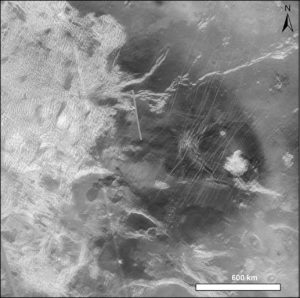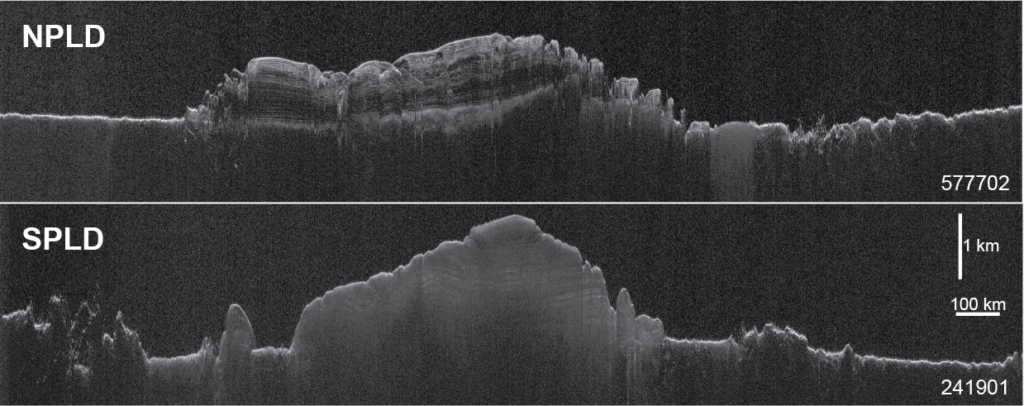Assessing the ancient tesserae rock record. Tesserae are the most ancient materials on Venus and may have formed during different climate conditions. Their composition (basalt vs. granite) is unknown, but can provide important constraints on the volume of water present during their formation. Changes in radar brightness are analyzed to address tesserae composition using the Magellan orbital dataset, in parallel with morphologic analyses to identify regions of distinct tesserae, relatively recent volcanic activity, the distribution of impact crater ejecta, as well as the regions of relatively “pure” (regions with no impact crater ejecta) tesserae. As the most ancient surface materials, tesserae provide a unique opportunity to interpret the oldest climate record on Venus.

Superposition of Stuart crater ejecta on tessera of Alpha Regio. Magellan SAR data.
Scattering in the south polar layered deposits. The south polar layered deposits (SPLD) exhibit unusual scattering of the radar signal. Note the SPLD are a medium gray color in the image below and the internal reflectors are difficult to see compared with the north polar layered deposits (NPLD). We are conducting analyses of the signal shape across the deposit and surface roughness of the SPLD to determine the surface texture or process, and associated climate conditions, responsible for scattering the radar echo.

SHARAD radargrams of the north and south polar layered deposits (SPLD) illustrating the unusual scattering in the SPLD.
Probing the climate record preserved in south polar deposits. Using radar sounder datasets (MARSIS and SHARAD) are being used to characterize the subsurface structure of two areally extensive deposits in the south polar region, the Amazonian south polar layered deposits and the Hesperian Dorsa Argentea Formation. We are using these radar sounder datasets to determine the distribution and orientation of subsurface reflectors, as well as the amount of ice contained within these south polar deposits to reveal the preserved long-term climate record.

MARSIS radargram of the south polar layered deposits surrounded by Dorsa Argentea Formation reflectors.


